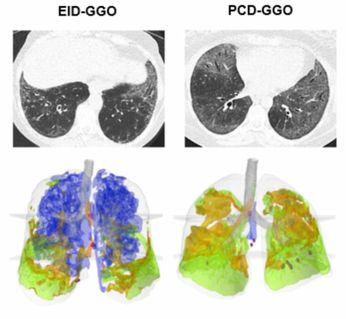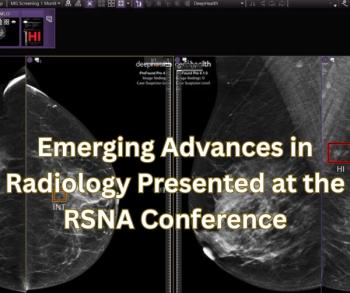
FDG PET/CT May Help Predict COVID-19 Disease Severity
Clinicians, especially those working in a region of high COVID-19 prevalence, should be aware that FDG PET/CT can detect lung and lymph node findings suggestive of COVID-19.
The detection rate of COVID-19 infection on 18F-fluorodeoxyglucose positron emission tomography/
“During the peak of the pandemic in New York City, we started noticing that patients coming in for FDG PET/CT for their cancer care had lung findings suggestive of COVID-19,” said Randy Yeh, M.D., of the department of radiology at Memorial Sloan Kettering Cancer Center in New York. “We decided to perform a study to evaluate the imaging features of COVID-19 on FDG PET/CT and to determine the clinical utility of FDG PET/CT in COVID-19, if any.”
This single institution retrospective review included 31 patients (mean age 57 years, 21 males) with COVID-19, diagnosed using real time reverse transcription–polymerase chain reaction, who had undergone FDG PET/CT for routine cancer care between March 1, 2020 to April 30, 2020, the peak of the pandemic in New York City.
RELATED:
Of the patients, 13 had positive PET/CT scans for COVID-19, representing a detection rate of 41.9%. Patients with positive scans had higher rates of symptomatic COVID-19 infection compared with patients who presented with negative scans, at 77% and 28%, respectively (P = .01). A similar result was seen for hospitalizations, at 46% and 0%, respectively, (P = .002). Of the patients with positive scans, 11 had FDG-avid lung findings, with mean lung SUVmax of 5.36, and six had extrapulmonary findings of FDG-avid lymph nodes. Lung SUVmax was unrelated to the presence of COVID-19 symptoms, severity or disease course. Deaths from COVID-19 did not differ between those with and with positive scans. (P = .2).
“The findings do not change the diagnostic pathway or main imaging modalities for COVID-19, which remain chest radiography and CT chest. However, our findings do raise awareness that COVID-19 can be detected on FDG PET/CT and that it portends more severe disease,” Yeh said.
Yeh noted that clinicians, especially those working in a region of high COVID-19 prevalence, should be aware that FDG PET/CT can detect lungs and lymph node findings suggestive of COVID-19. He added that “nuclear medicine physicians and radiologists interpreting FDG PET/CT scans should be aware of the typical findings of COVID-19 and alert referring clinicians if they see such findings, as this may be the first sign that a patient has COVID-19,” he added.
Newsletter
Stay at the forefront of radiology with the Diagnostic Imaging newsletter, delivering the latest news, clinical insights, and imaging advancements for today’s radiologists.




























